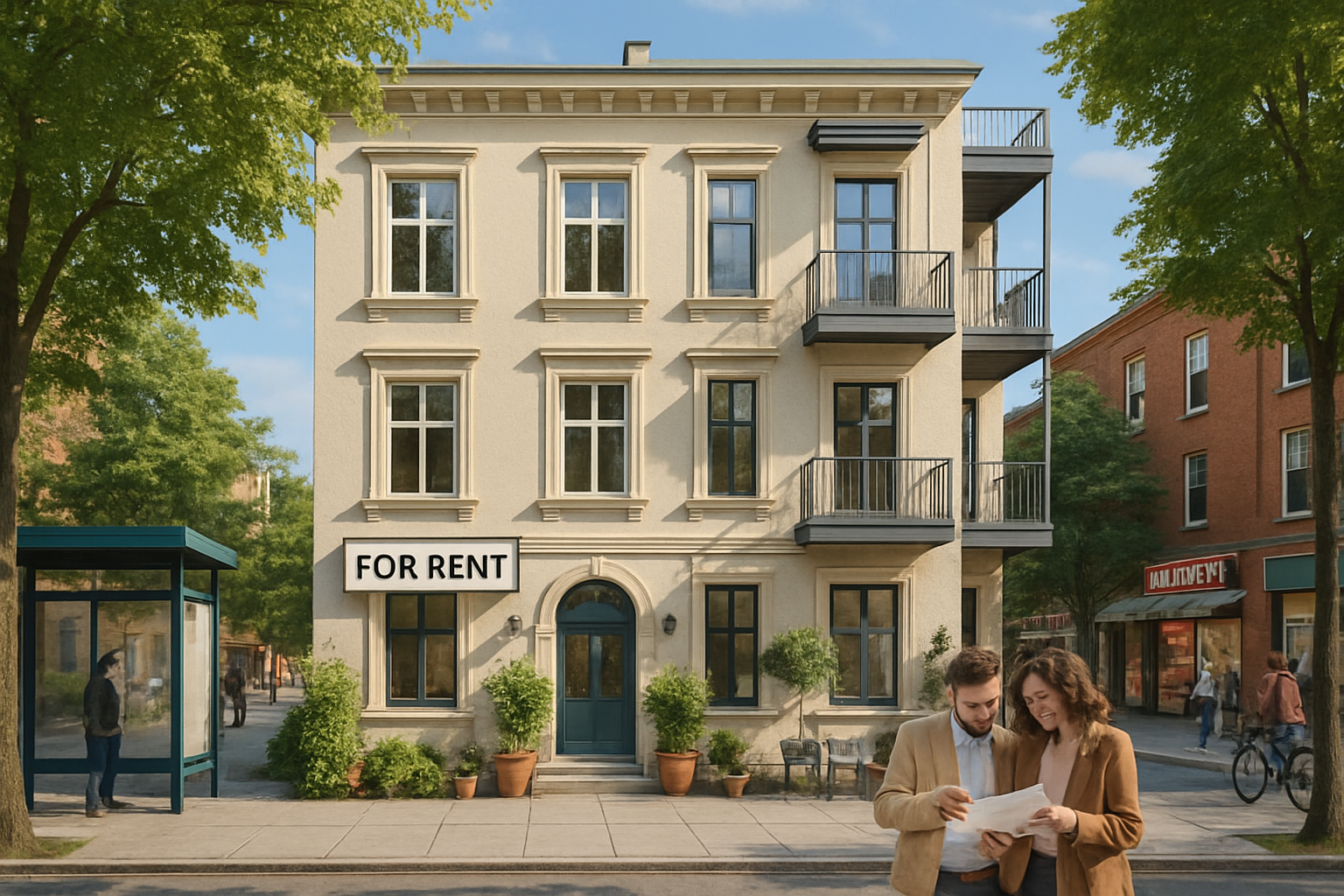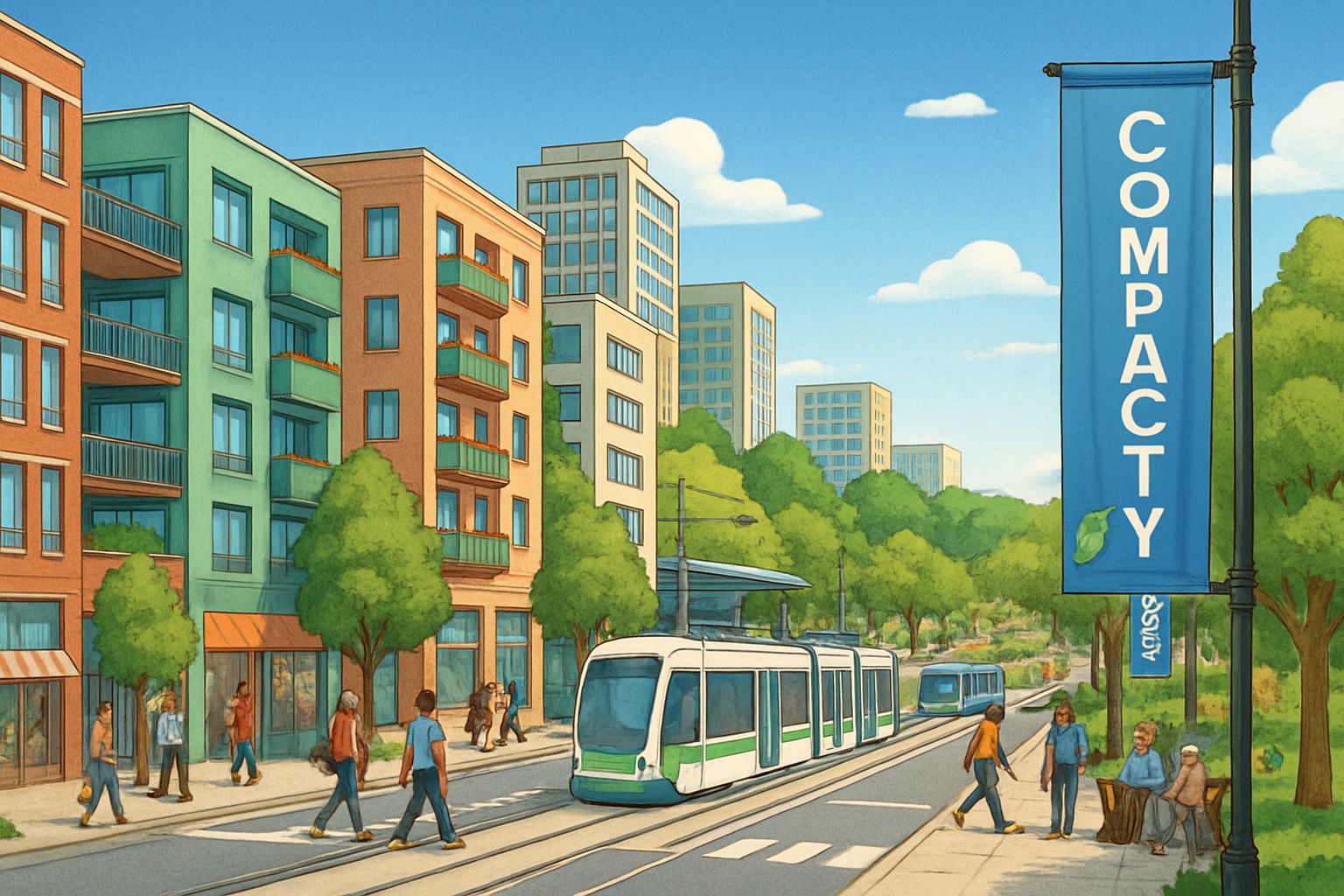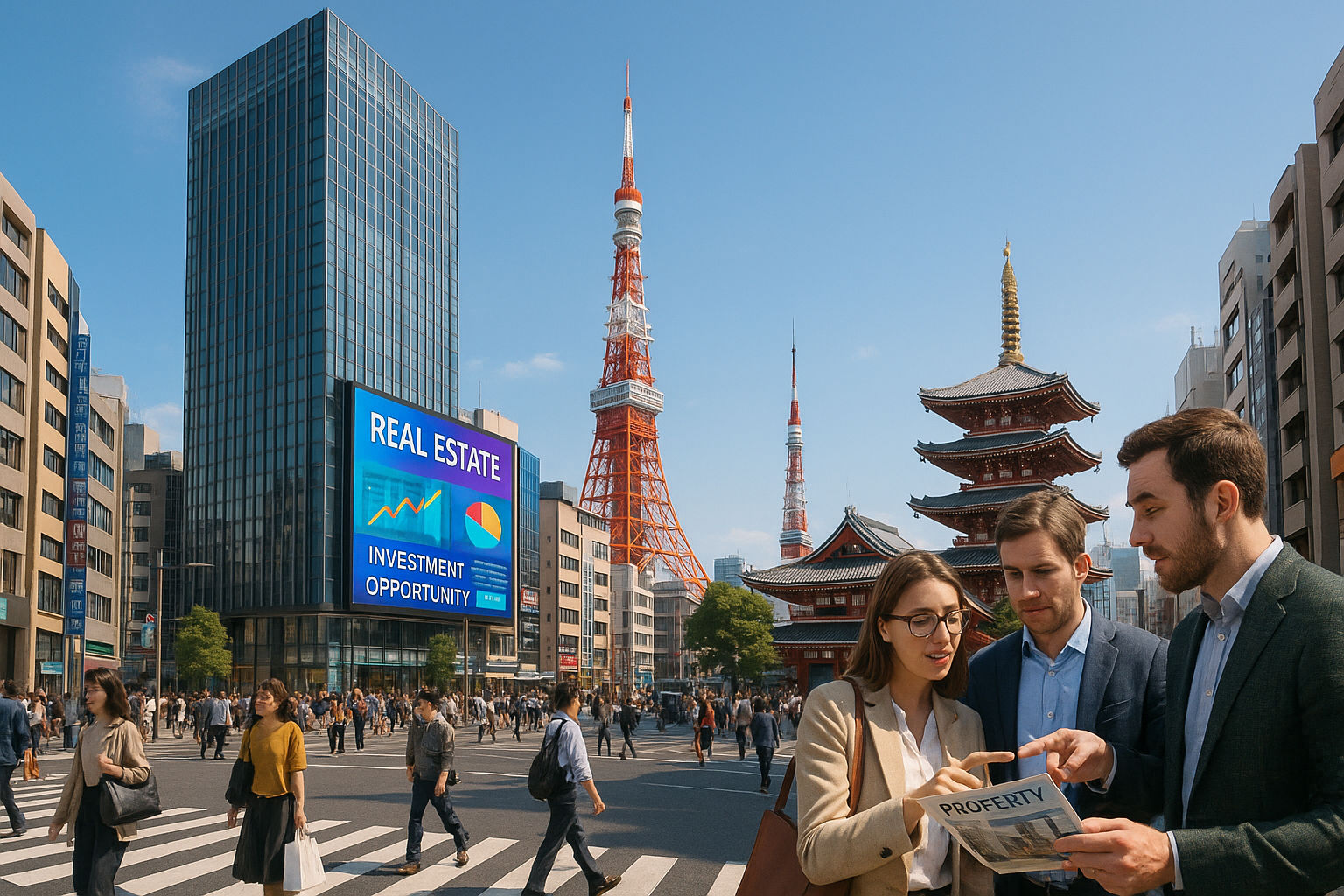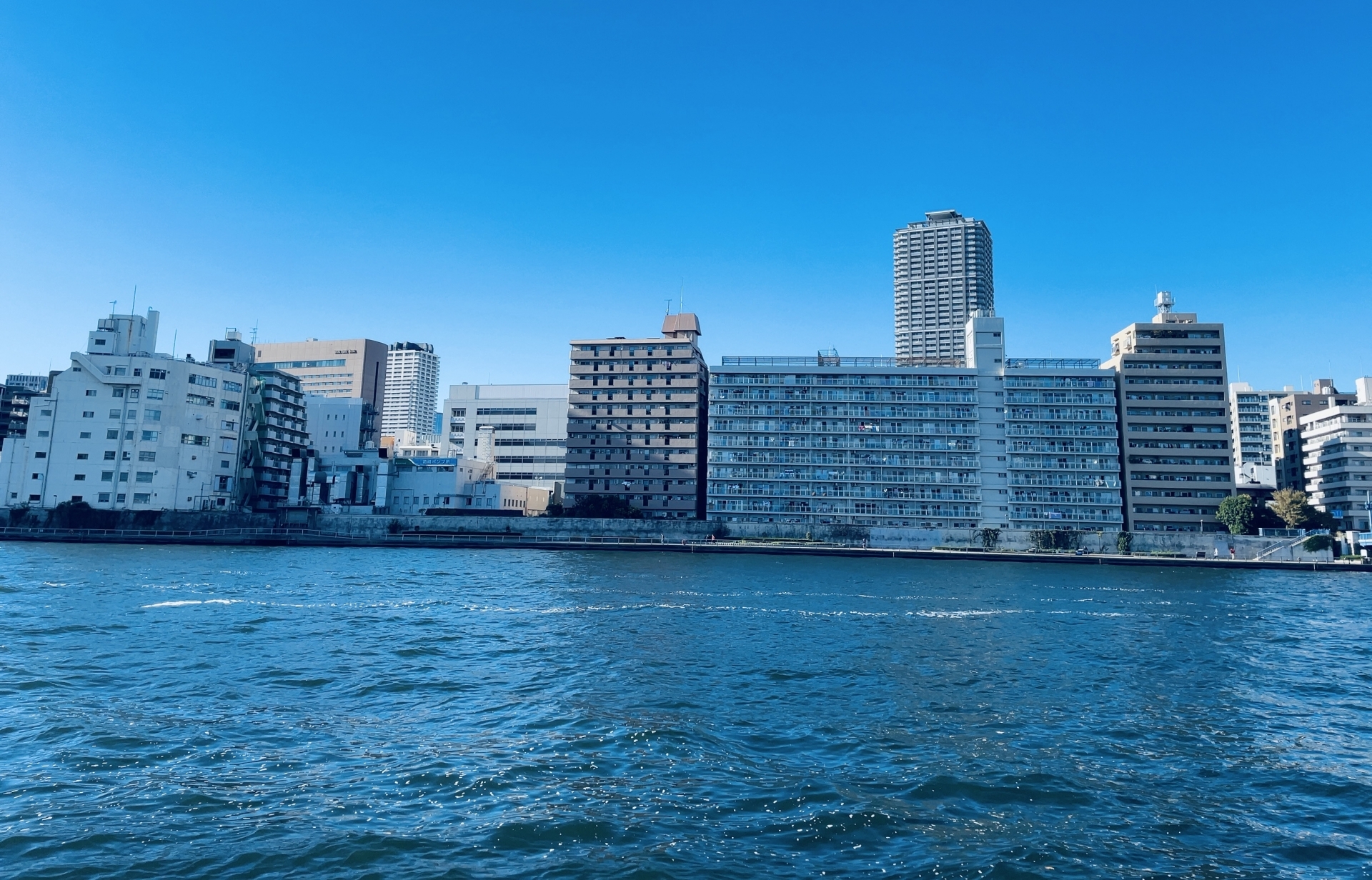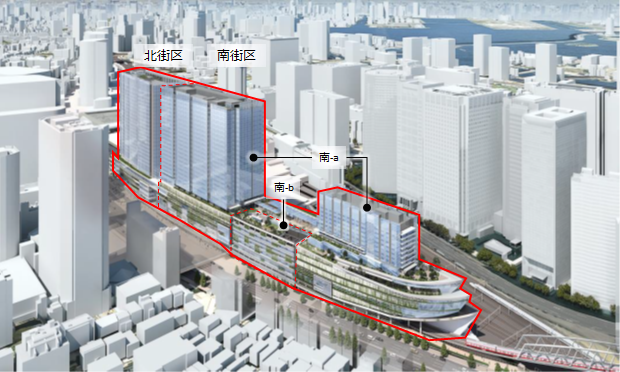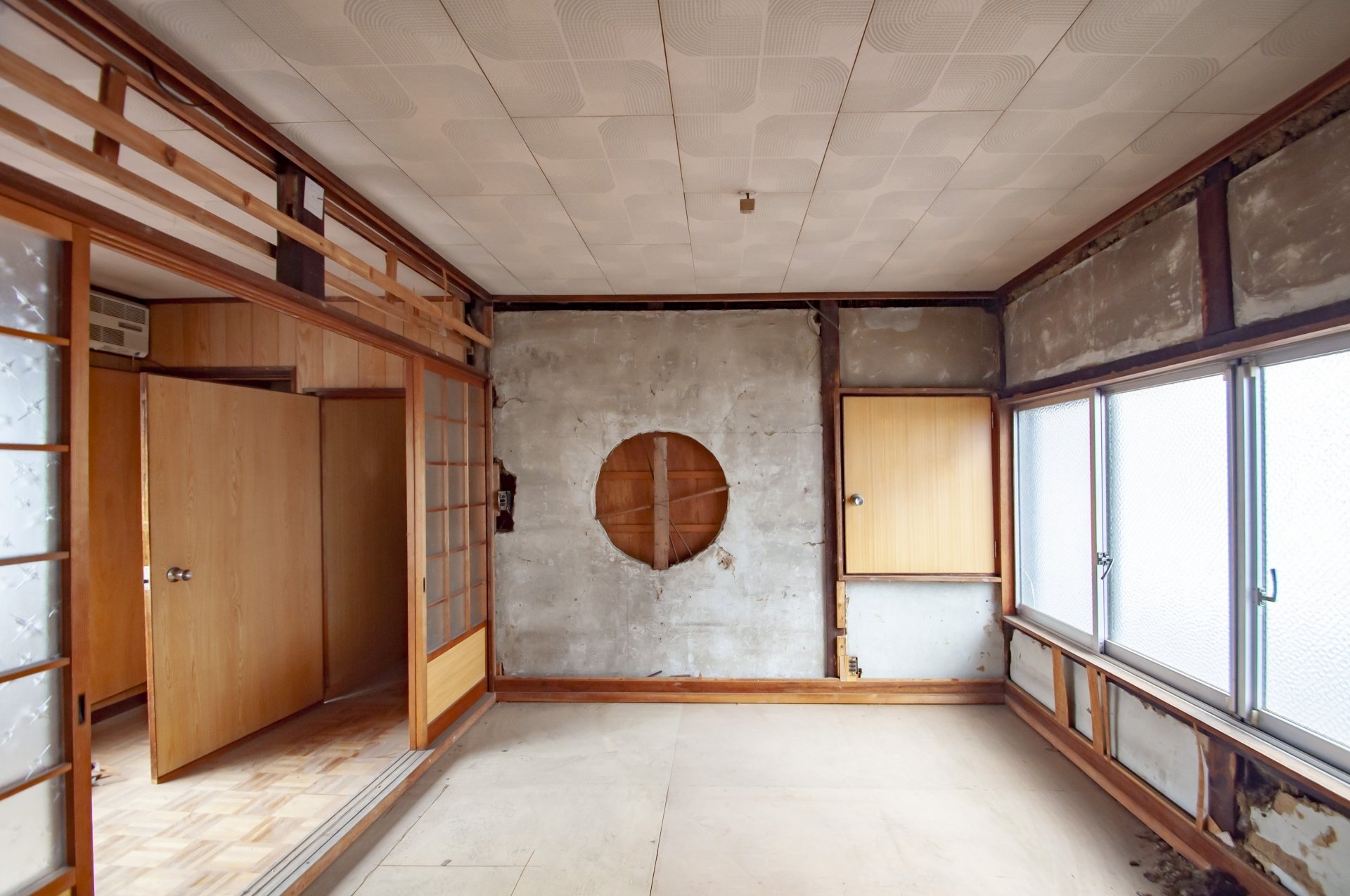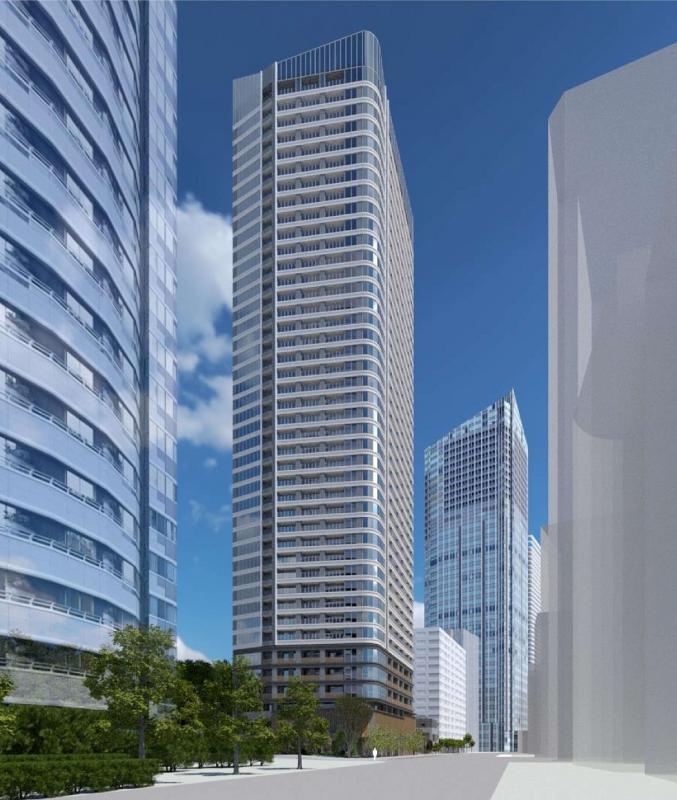The Tsukiji Urban Development Project is a large-scale redevelopment project for the former Tsukiji Market site, which closed in 2018 following the relocation of the Toyosu Market. The former Tsukiji Market site covers approximately 190,000 square meters (approximately 19 hectares) and is an extremely valuable piece of land in the heart of the city, with high expectations for its redevelopment. The Tokyo Metropolitan Government aims to maximize the potential of this land and create a new urban hub that connects the city center with the waterfront. The goal is to promote sustainable urban development that will contribute to improving Tokyo's international competitiveness by introducing private-sector vitality while harmonizing the historic “food culture” of Tsukiji and the surrounding waterfront areas (Sumida River and Hamarikyu Gardens).
This project is being led by the Tokyo Metropolitan Government, and a consortium of private companies has been selected through a public tender to utilize the Tsukiji Market site, which is a shared asset of the citizens of Tokyo. In March 2019, the Tokyo Metropolitan Government formulated the “Tsukiji Urban Development Policy” to outline its vision for the future, and in November 2022, the terms of reference for the redevelopment project were announced. Following a public solicitation and review process, a group of 11 companies led by Mitsui Fudosan Co., Ltd. was selected as the project developer on April 19, 2024, and a basic agreement with the Tokyo Metropolitan Government was signed in March 2025. This marks the transition of the plan into the concrete implementation phase, with the full scope of the redevelopment project now clear.
The total estimated project cost is approximately 900 billion yen, with construction and opening scheduled to proceed in phases. Construction of some commercial facilities designated as “early-stage vitality facilities” is planned to begin by the 2025 fiscal year, with some facilities expected to open by the late 2020s (around 2028–2029). Following this, the opening of major facilities will proceed sequentially from the early to mid-2030s, with the entire town's grand opening scheduled to be completed by the late 2030s. Although this is a very long-term development schedule, the Tokyo Metropolitan Government and the consortium of developers will collaborate to gradually transform the town's landscape.
Details and current status of the Tsukiji Market site redevelopment plan
The site, which stretches along the Sumida River, will feature a large-roofed multipurpose stadium (the white roof in the center) and a cluster of skyscrapers (on the right), with green open spaces planned throughout. The area will be surrounded by water and greenery, harmonizing with the surrounding Hamarikyu Gardens and Tsukiji Outer Market. It is expected to become a new “face of Tokyo,” offering the openness of a waterfront area despite its central location.
The Tsukiji Market Site Utilization Plan proposes the creation of an advanced city where nature and urban life coexist under the concept of “ONE PARK × ONE TOWN.” The plan aims to create a sustainable urban space that incorporates the latest technology and ideas while utilizing the waterfront environment of the Sumida River and Hamarikyu Gardens and the historical and cultural resources of Tsukiji. Specifically, the plan aims to create a new “face” for Tokyo's waterfront by establishing squares and waterside spaces where people can gather and relax, and to promote interaction between the city center and the coastal area by forming a wide-area transportation hub that can accommodate boat transportation and “flying cars” (air mobility). Additionally, emphasis is placed on promoting Tsukiji's unique food culture and artistic heritage, as well as preserving historical resources. The plan includes integrating the vibrant atmosphere of the Tsukiji Outer Market into the new district and showcasing it to the world.
Currently, this plan has progressed to the detailed design and administrative procedures phase following the signing of a basic agreement. At the Tsukiji Market site, demolition work and temporary use (such as temporary parking lots) have been conducted since the market closed. preparations for full-scale redevelopment are now underway. Construction of the first phase of facilities is scheduled to begin in the 2025 fiscal year, with commercial facilities and a water transport hub planned to be built adjacent to the Tsukiji Outer Market on a portion of the site (this initial development area is close to the existing Outer Market and aims to create early vibrancy). Subsequently, construction of major facilities such as a stadium, offices, and hotels will begin in earnest, and the city will gradually take shape. Currently, discussions are being held between the project operator, the Tokyo Metropolitan Government, Chuo Ward, and other stakeholders to finalize the details of a plan that harmonizes with the local community. Chuo Ward has also compiled its “Tsukiji Town Development Concept” and is working to incorporate local opinions on issues such as cooperation with surrounding areas and transportation infrastructure development into the plan.
Introduction of planned development facilities
The Tsukiji Urban Development Project will create a complex of facilities with a variety of uses, including commercial, business, cultural, accommodation, and residential. According to the plan, a total of nine main buildings will be constructed in the new district, which will house a large stadium, a life science center, a high-performance convention facility, a hotel, residences, a theater, commercial facilities, and a water transportation terminal. The proposal outline includes plans for a roofed stadium with a capacity of up to approximately 50,000 people, a research and development center for the life sciences, halls capable of hosting international conferences, luxury hotels, and a food hall showcasing Japanese culinary culture. These facilities will be developed across nine distinct areas. Additionally, the plan includes the integration of a new subway line station (connecting the coastal area to the city center) currently being planned by the Tokyo Metropolitan Government, a landing port for “flying cars,” and a boat terminal, aiming to create a next-generation transportation hub that connects land, sea, and air.
The large-scale exchange facility (stadium) will be the core facility of this project, with a capacity of 50,000 people for sports events and large concerts. It will feature a retractable roof, allowing events to be held regardless of weather conditions. The stadium will also be equipped with hospitality facilities such as lounges, VIP rooms, and corporate suites, providing a comfortable viewing experience for visitors from both domestic and international locations. Additionally, the stadium is planned to be open to the community. On days without events, part of the concourse will be open to the public, providing a space for walking and jogging. The upper deck will feature green spaces, and a viewing area offering panoramic views of the adjacent Hamarikyu Gardens will be developed, creating a tranquil retreat where visitors can enjoy nature while in the heart of the city.
MICE facilities (international conference halls, etc.) and hotel/residence buildings are also key features of the plan. MICE refers to large-scale international conferences and exhibitions, and the plan includes the development of a conference hall centered around a 1,200-seat hall. Equipped with state-of-the-art simultaneous interpretation facilities and a flexible layout, the hall is expected to accommodate a wide range of events, from international academic conferences to corporate events and academic conferences. The adjacent luxury hotel will serve as a reception facility for international visitors, with plans to introduce residences for long-term stays (service apartments and high-end rental housing) on upper floors. These accommodation and residential facilities will create a comfortable environment for visitors from Japan and abroad, with the aim of creating a “city where people gather day and night.” The MICE facilities and surrounding facilities will be networked to enable the area to host events for tens of thousands of people. To enable conference participants to enjoy sightseeing and other activities before and after events, “after-MICE” programs are being proposed, including visits to Hama-rikyu Gardens and eating at Tsukiji Outer Market, which offer unique experiences unique to Tsukiji.
A hub for food and culture is also an important theme of the Tsukiji redevelopment project. Tsukiji is known as one of Japan's leading food districts, and in order to preserve and develop this tradition, there are plans to build a large food hall (restaurant district) in the new district. Here, visitors from around the world will be able to enjoy a variety of gourmet foods, including fresh ingredients from all over Japan, local cuisine, sushi, and Japanese cuisine, and experience the charm of “Tokyo, the city of food.” In addition, a theater hall with a capacity of 1,200 seats is planned to be built on the site, which will serve as a cultural facility capable of hosting a wide range of performances, including traditional performing arts, contemporary theater, and live performances. This theater is positioned as a cultural hub for the region and a venue for artistic exchange between Japan and the rest of the world. Furthermore, a promenade (walkway) is planned to guide people from the Tsukiji Outer Market to the new district. The aim is to bring the vibrancy and charm of the Outer Market into the district, creating a sense of unity and flow. Small shops and exhibition spaces will also be located along the promenade, offering visitors the opportunity to experience the history and culture of Tsukiji.
A hub for life sciences is another feature of this project. Taking advantage of the concentration of medical facilities in the Tsukiji area, including St. Luke's International Hospital, there are plans to establish a new research and development center for advanced medicine and biotechnology. Specifically, a “life sciences commercial complex” will be constructed to house offices, research laboratories, and incubation facilities for start-up companies, with the aim of creating innovation in the healthcare industry through collaboration with medical institutions and universities. The facility will also include a commercial area (restaurants and shops) open to the general public, creating a lively atmosphere for researchers, business people, and local residents alike. Environmental considerations are also prioritized, with plans to introduce renewable energy utilization facilities such as a regional heating and cooling system utilizing water from the Sumida River and solar power generation. The project also includes large-scale greening efforts to ensure a 40% green coverage rate across the entire site, aiming to enhance urban environmental quality while realizing sustainable urban development.
In this way, the Tsukiji Urban Development Project aims to create a “mixed-use urban space” where commercial, business, cultural, research, and residential elements are balanced. The diverse spaces, ranging from high-rise buildings to low-rise waterfront facilities and green areas, will be integrated into a cohesive design, creating an area that offers the convenience and appeal of being able to work, live, relax, and enjoy entertainment all within a single neighborhood.
Impact on the local community and economy and expected effects
The redevelopment of the Tsukiji Market site will have a significant impact on the local community and economy. First, the construction phase will create numerous jobs, and economic ripple effects are expected for related companies. The 900 billion yen project is expected to create job opportunities not only in the construction and real estate industries, but also in a wide range of industries, including design, technology development, and service industries. Even after completion, the stadium events, international conferences, and operation of new commercial facilities are expected to create continuous employment opportunities, contributing to the revitalization of the local economy.
Next, tourism promotion effects are expected to be realized by leveraging the Tsukiji location. Tsukiji has always been a popular area for domestic and international tourists, with many foreign travelers visiting the Tsukiji Outer Market in particular. The new attractions to be developed, such as the stadium, MICE facilities, food halls, and theaters, will draw an even wider range of visitors to Tsukiji. For example, large-scale concerts and international sports events will attract audiences from across Japan and overseas, bringing vitality to nearby hotels and restaurants. International conferences will also attract business travelers and researchers from around the world, providing an opportunity to showcase the appeal of Tokyo. Such an increase in the number of visitors is expected to provide a significant boost to the local food and retail industries, and the economic ripple effects are anticipated to extend beyond Tsukiji to surrounding areas such as Ginza and Nihonbashi.
Additionally, this project aims to enhance Tokyo's urban competitiveness. The redevelopment concept for Tsukiji includes the vision of “making Tokyo a city where people from all over the world gather,” and the new Tsukiji district, with its waterfront charm and cutting-edge urban functions, is expected to become a new landmark for Tokyo. There are few examples of such large-scale mixed-use developments in the city center in recent years, and once completed, it is likely to become one of the “gateways to Tokyo” that will appeal to both domestic and international visitors. As seen in the Hudson Yards development in New York and Canary Wharf in London, successful urban regeneration projects can enhance the overall brand power of a city. Similarly, the successful redevelopment of Tsukiji is expected to further enhance Tokyo's reputation as an international city and contribute to attracting businesses and tourists in the future.
Another important effect on the local community is the improvement of the living environment for residents in the surrounding area. While the existing Tsukiji Market has been characterized by early morning truck traffic and congestion, the new town will feature pedestrian decks to separate pedestrians and vehicles, as well as strengthened transportation hubs, ensuring safe and comfortable pedestrian spaces (the plan includes a vast pedestrian deck on the second floor of the site, with ground-level areas designated for vehicle traffic to separate pedestrian and vehicle flows). There will also be an increase in public spaces such as plazas and green spaces that can be freely used by citizens, which will serve as places for local residents to relax and interact. Furthermore, the expansion of commercial facilities is expected to improve the convenience of daily shopping. In particular, the Tsukiji area has traditionally been known for its fresh food market, and there are few large commercial malls in the vicinity. If the redevelopment creates a commercial zone with a variety of tenants, local residents will be able to enjoy shopping and dining out without having to travel far. Overall, this project is expected to bring significant benefits in terms of both economic ripple effects for the region and improved quality of life.
Impact on the real estate market (price trends, investment perspectives, etc.)
The Tsukiji redevelopment plan is having a significant impact on the central Tokyo real estate market. First, there is expectation of rising land prices. The high-density development of the vast Tsukiji Market site is expected to boost land prices in the surrounding areas, and indeed, since the redevelopment announcement, there has been a noticeable upward trend in land prices around Tsukiji. Experts have pointed out that the “expectation of rising land prices due to the Tsukiji redevelopment” could increase interest in companies headquartered in the Tsukiji area. Reports also indicate that investment capital is flowing into related real estate and shares of surrounding companies in response to the redevelopment news, suggesting that the market is beginning to factor in the potential value appreciation of the Tsukiji area.
Actual land price data also reflects expectations for redevelopment. For example, according to Tokyo Metropolitan Government land price surveys, the benchmark land price in the Tsukiji 3-chome area of Chuo Ward recorded a significant increase of +16.6% year-on-year in 2024. This growth rate is comparable to that of the Ginza area within the same Chuo Ward, indicating heightened investment demand for the Tsukiji area. While land prices stagnated for a time immediately after the relocation of the Tsukiji Market, the concretization of redevelopment plans has raised expectations for future profits, revitalizing the real estate market. Plans for apartment development and hotel expansion are also being reported in the surrounding area, suggesting that the redevelopment effect could elevate the overall real estate value of the Tsukiji vicinity.
From an investment perspective, this project is an extremely large-scale project for the private consortium, and the participating companies are expecting future revenue opportunities. The decision by major developers such as Mitsui Fudosan to invest 900 billion yen is based on the expectation of long-term rental income and asset value appreciation from the creation of prime downtown real estate. Diversified returns are anticipated, including rental income from office and commercial tenants, revenue from hotel and event operations, and profits from residential sales and real estate disposals. In particular, Tsukiji is a prime location adjacent to Ginza and Nihonbashi, yet it has historically lacked large-scale office buildings. The redevelopment could attract new domestic and international companies seeking state-of-the-art office spaces, potentially benefiting Tokyo's office market.
On the other hand, given the scale of this massive development, the impact on the real estate market is being carefully assessed. While the Tokyo Bay area has seen fluctuations in market conditions in recent years due to the large-scale supply of ultra-high-rise apartments, the Tsukiji project is primarily commercial and business-oriented with limited residential use, so its direct impact on the residential market is expected to be minimal. Instead, the main effect is likely to be an increase in the value of surrounding used apartments and commercial buildings due to the enhanced brand power of the area through redevelopment, what is known as the “asset value uplift effect.” For real estate investors, the entire area around Tsukiji, Ginza, and Harumi is being “revalued,” and there is growing interest in it as an investment target with potential for future capital gains.
Benefits for general consumers (improved living environment, convenience, etc.)
The Tsukiji Urban Development Project will bring various benefits to general consumers, including Tokyo residents and visitors. First and foremost is the improvement of the living environment. After redevelopment, the traffic congestion around Tsukiji will be alleviated and safety enhanced thanks to the newly developed road network and pedestrian spaces replacing the large-scale market. The plan includes barrier-free pedestrian decks and plazas, making the area safer and more accessible for the elderly and families with children. Additionally, the increase in green spaces and open areas will provide nearby places where residents can enjoy the seasons and nature right in the heart of the city. While the traditional Tsukiji Market was not easily accessible to the general public, the new district will feature public spaces open to everyone, creating a place for community interaction—a significant advantage.
Improved convenience is another important advantage. Currently, the nearest public transportation options around Tsukiji are the Tsukiji Station on the Hibiya Line and the Tsukiji Market Station on the Oedo Line, but if the new subway station planned as part of the redevelopment is realized, access to Tokyo Station and the waterfront subcenter will be greatly improved. Once the new line connecting the city center and the waterfront opens, Tsukiji will become a transportation hub in Tokyo, improving convenience for commuting, going to school, and shopping. In addition, the construction of a water bus (boat transport) terminal will enable sightseeing boat trips to Asakusa and Odaiba. In the future, if “flying cars (air taxis)” become practical, Tsukiji could also serve as a departure and arrival point for them. The introduction of such next-generation mobility services will expand the transportation options available to consumers and lead to a more comfortable and attractive urban experience.
The newly developed commercial facilities will also bring significant benefits to consumers. While the traditional Tsukiji Outer Market has been centered on specialty food stores and restaurants, the redevelopment area may include a modern shopping mall with a variety of tenants, including fashion, miscellaneous goods, and daily necessities. This will enable everyday shopping to be completed in the Tsukiji area, improving the convenience of life for local residents. In addition, the construction of large-scale event facilities will allow Tokyo residents to enjoy sports and concerts locally without having to travel far. If families can easily visit the stadium or theater for events on weekends, entertainment options will increase and life will become richer. Even when events are not being held, part of the stadium is planned to be open to the public, allowing people to enjoy jogging or strolling after work or on weekends, thereby serving as a place for daily health promotion and leisure activities.
Furthermore, the Tsukiji redevelopment project also offers disaster prevention benefits. The construction of buildings equipped with the latest earthquake-resistant and disaster prevention facilities will enhance the area's disaster prevention functions, and in the event of a large-scale disaster, the buildings are expected to be used as evacuation sites and shelters for people unable to return home. Open spaces and boat transportation hubs may also be useful for transporting supplies and as evacuation routes in the event of a disaster. Compared to when the market facilities were old and dilapidated, the overall level of safety and security in the city will be greatly improved, which is a major benefit for local residents.
In this way, the Tsukiji district urban development project is a project that will enhance both the livability and appeal of the city for the general public. The new Tsukiji district will be a comfortable and enjoyable space for both residents and visitors.
Future Challenges and Prospects
While the Tsukiji redevelopment project has attracted much attention, there are also challenges to its realization. First, the scale and long-term nature of the plan itself are challenges. As this is a long-term development project that will continue until the late 2030s, it will be necessary to respond flexibly to changes in social and economic conditions during that period. The content of the proposals at the planning stage may also be changed through future discussions, and the project operator will be required to evolve the project in a flexible manner in response to changes in circumstances. In particular, there is uncertainty about how demand for large-scale events and the status of international conferences will evolve in a post-pandemic society. In order to maintain high utilization rates for stadiums and MICE facilities and generate revenue, it will be essential to continue efforts to attract attractive events and develop new entertainment content. The consortium includes companies from different industries, such as Yomiuri Shimbun and Toyota Real Estate, which have demonstrated their commitment to creating an attractive city by leveraging their respective strengths, such as media outreach and mobility technology. The ability to effectively coordinate these interdisciplinary efforts and manage this long-term project will be crucial.
Next, the feasibility of transportation infrastructure development is also an issue. The new subway line (the so-called “coastal subway” plan) mentioned in the plan is currently under consideration by the Tokyo Metropolitan Government, but the actual start of construction and opening dates are undecided, and there are hurdles such as the large project cost and the national approval process. If the new line is not completed in time for the redevelopment area, traffic congestion and access issues during stadium events are a concern. On the other hand, if the new line opens, the value of Tsukiji will increase dramatically, but the fact that the success of this project is partly dependent on external factors such as railway construction can also be considered a risk. The Tokyo Metropolitan Government and related organizations are required to steadily advance the strengthening of transportation infrastructure, including the new line, and to take measures from the planning stage to alleviate congestion using the existing transportation network, even if the new line does not open. Specifically, measures in both software and hardware areas, such as enhancing shuttle buses and water buses, improving surrounding roads, and developing parking lots and bicycle parking facilities, will be necessary.
Additionally, harmony with the local community is an important theme. The Tsukiji area has a long history of coexistence between market stakeholders and local residents, forming a unique community. As the redevelopment alters the landscape and flow of people in the area, it is essential to ensure that local businesses and residents are not marginalized. As the Chuo Ward Office is currently doing by gathering local opinions and making proposals to the Tokyo Metropolitan Government, it is essential that the government, businesses, and local residents continue to work closely together to share challenges and develop solutions. For example, by carefully addressing details such as coexistence strategies with existing stores in the Tsukiji Outer Market and eliminating height differences between the redevelopment area and surrounding neighborhoods, we can strive to realize a Tsukiji where the old and new coexist. The harmonious coexistence of the historic Namari Shrine and the atmosphere of the Outer Market with the futuristic new district will create a multi-layered charm unique to Tokyo. To achieve this, it is important to take on the difficult challenge of balancing the preservation of local culture with the integration of the latest urban functions.
Finally, the balance between economic viability and public interest is also a challenge. As a privately led project, ensuring financial viability is essential. However, since the land is a shared asset of Tokyo residents, public interest must also be prioritized. The current plan takes into consideration the promotion of tourism and business as well as the harmony of the environment and culture, but as the plan is further developed, there may be situations where it will be necessary to strike a balance with economic rationality. In such cases, it will be important to prioritize long-term public value over short-term profits. For example, the maintenance costs of green spaces and plazas, as well as the profitability of cultural facilities, may become issues, but it is important to work together with the public and private sectors to enhance the value of the city.
Despite these challenges, the Tsukiji Urban Development Project is an extremely attractive project that embodies the future vision of Tokyo. The new urban space spreading along the waterfront will demonstrate its true value by being loved and utilized by many people. Although this is a long-term project spanning more than 10 years, the process of the city gradually taking shape through partial openings at key milestones is something that Tokyo residents can look forward to. We hope that this city, where the traditions that have thrived in Tsukiji will blend with the latest technology and ideas, will be completed safely and prosper. As ordinary consumers, we also wish to watch over this project with a long-term perspective. We look forward to the day when Tsukiji will once again emerge as a new symbol of Tokyo that we can proudly present to the world.

Daisuke Inazawa
Representative Director of INA&Associates Inc. Based in Osaka, Tokyo, and Kanagawa, he is engaged in real estate sales, leasing, and management. He provides services based on his extensive experience in the real estate industry. Based on the philosophy that “human resources are a company's most important asset,” he places great importance on human resource development. He continues to take on the challenge of creating sustainable corporate value.

.png)


